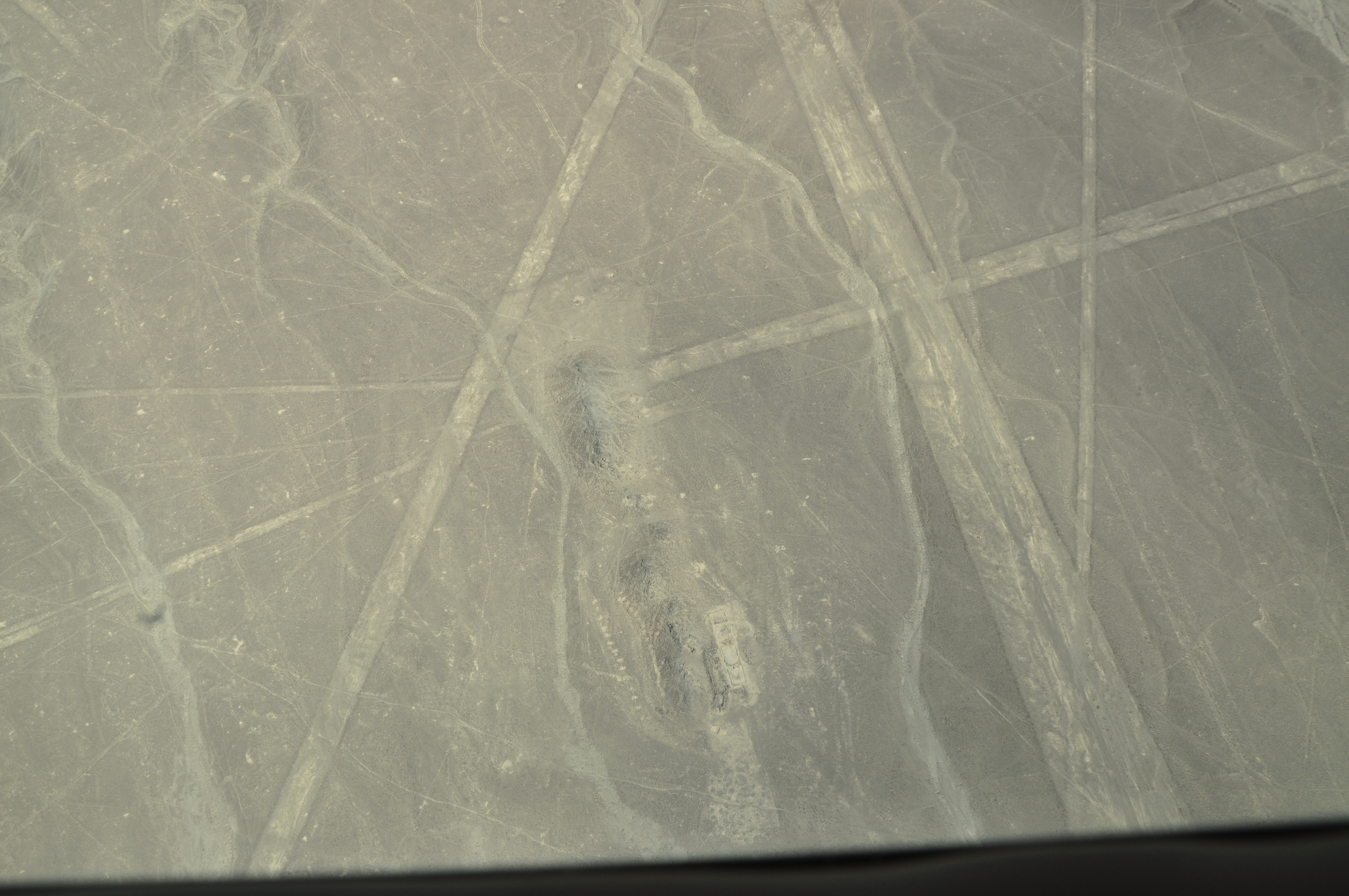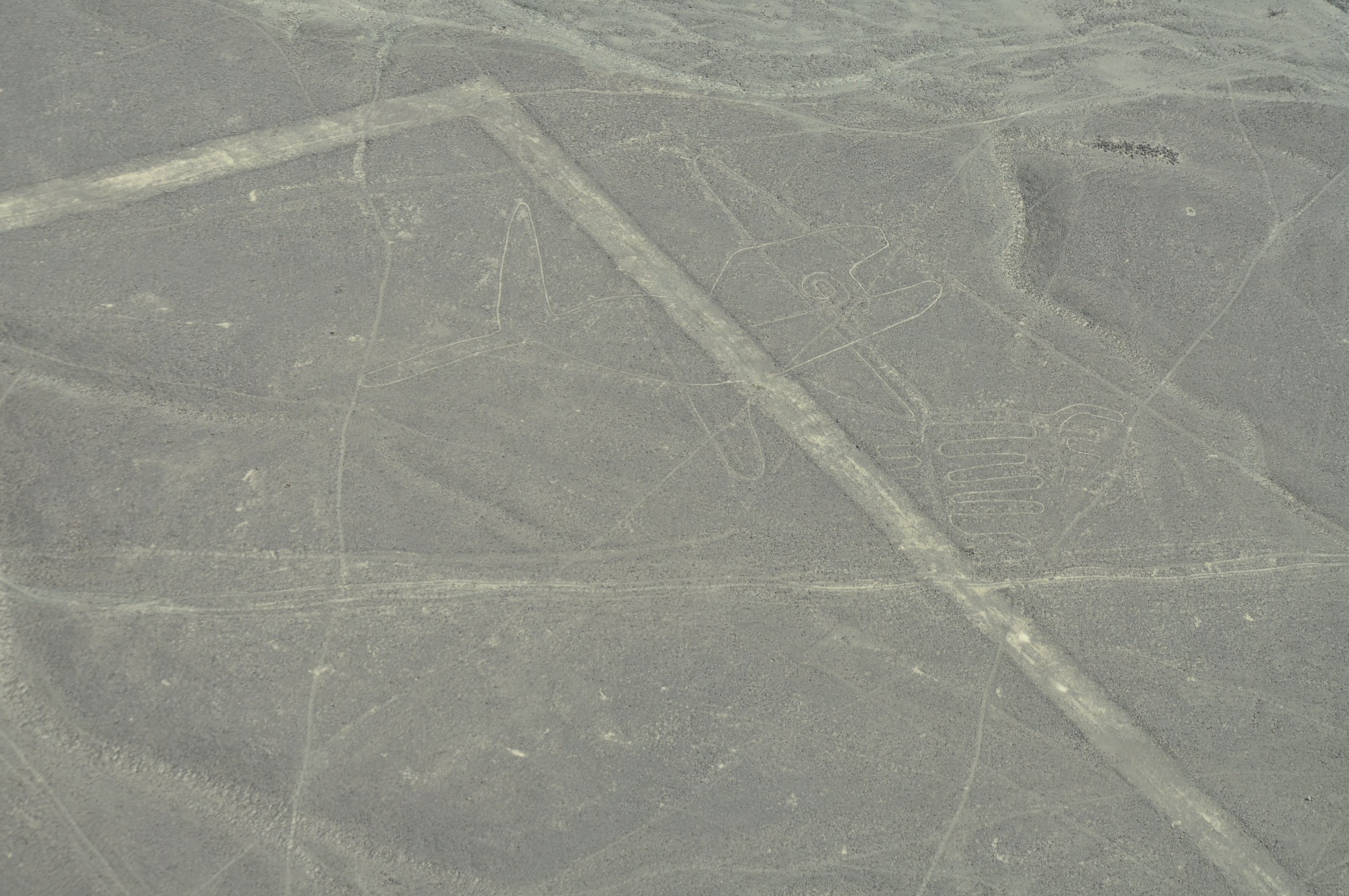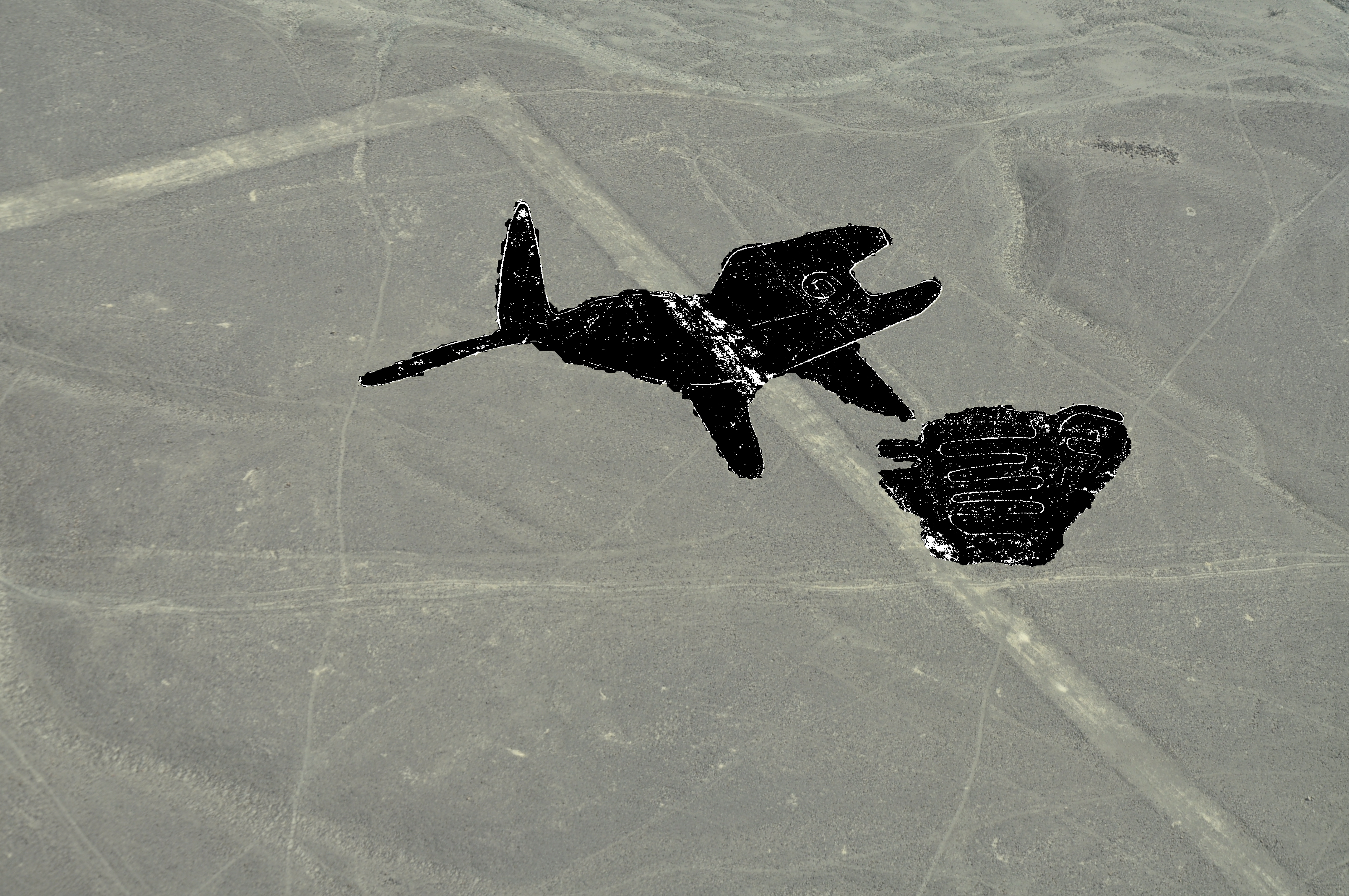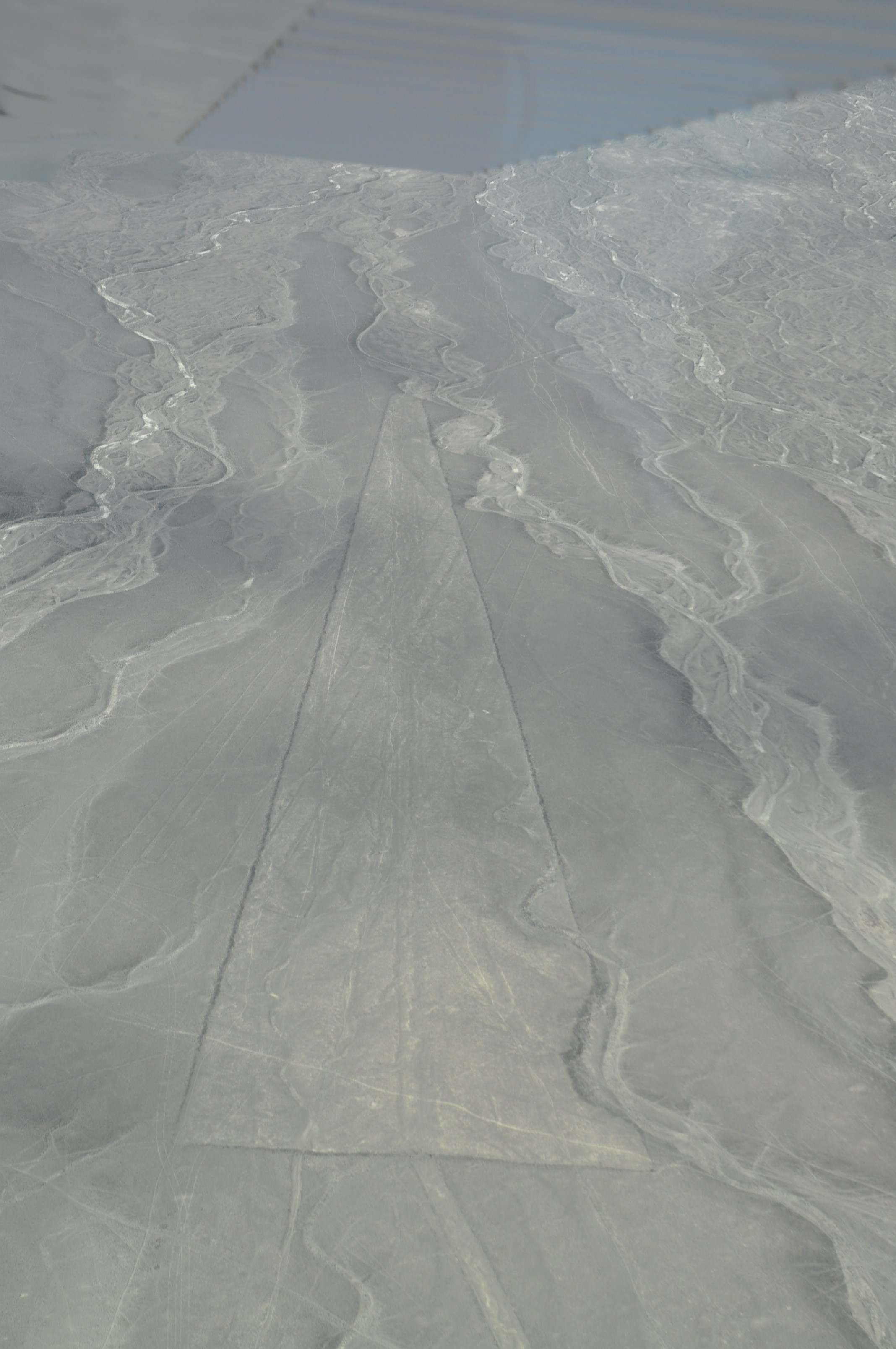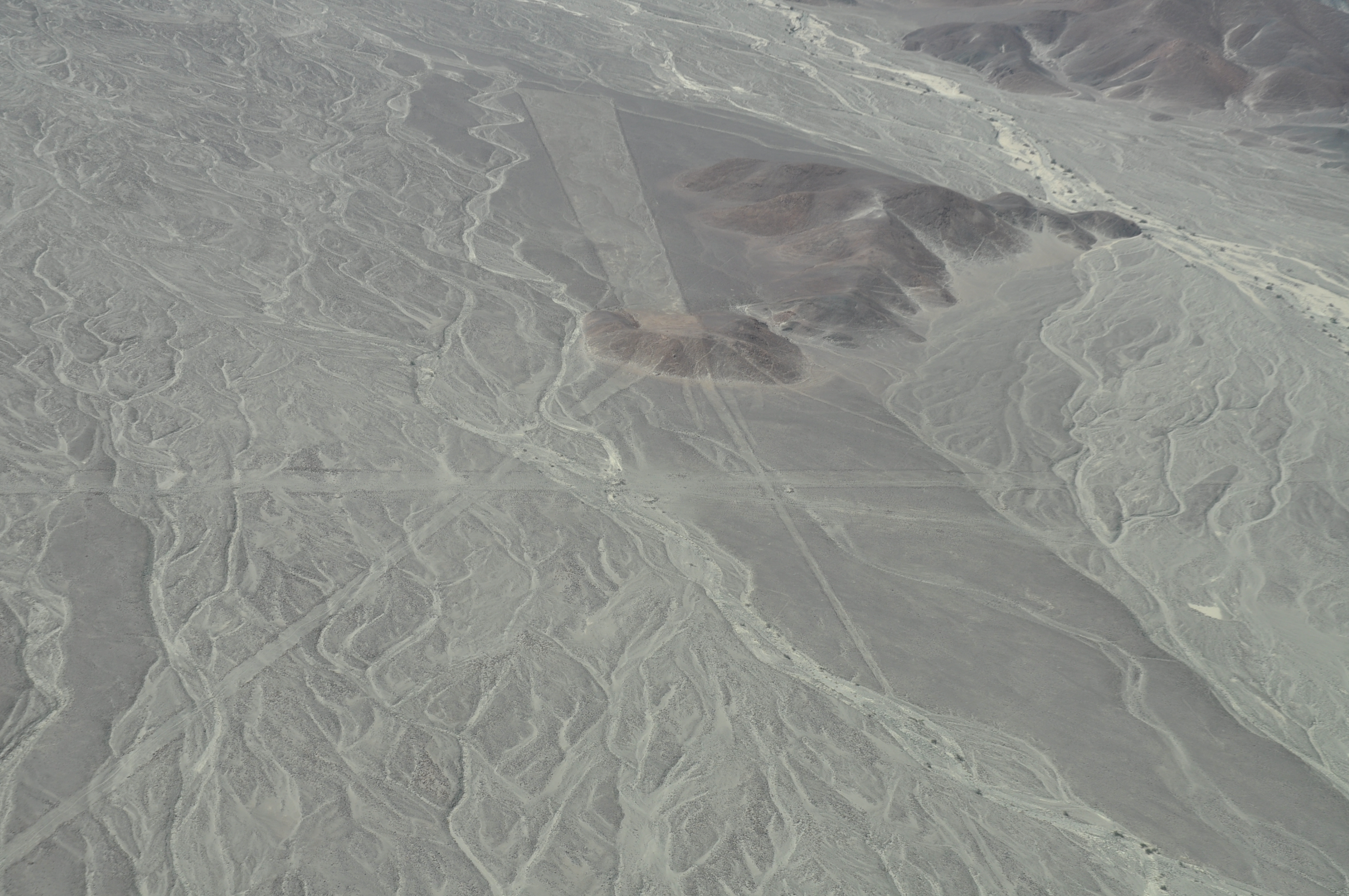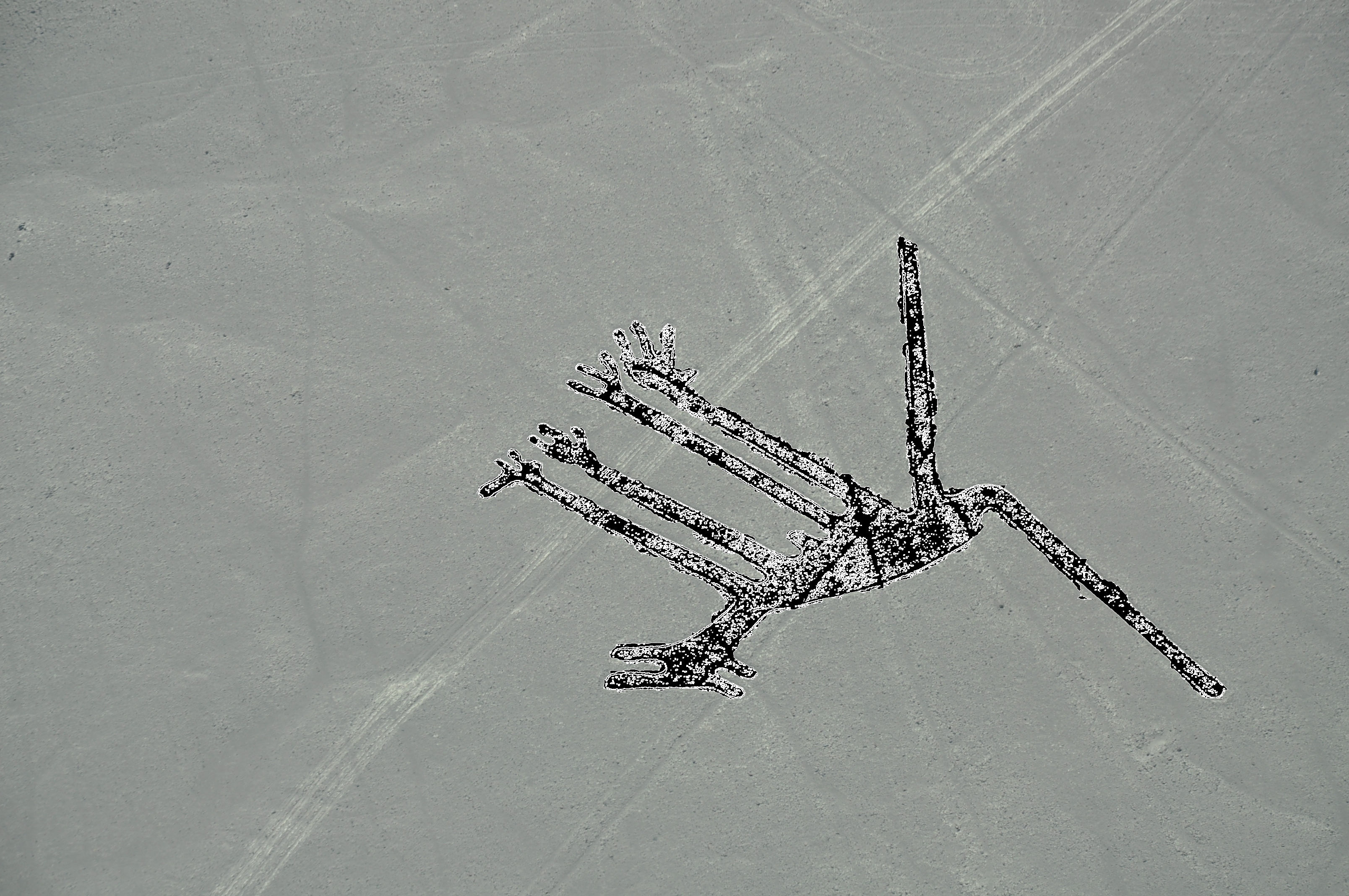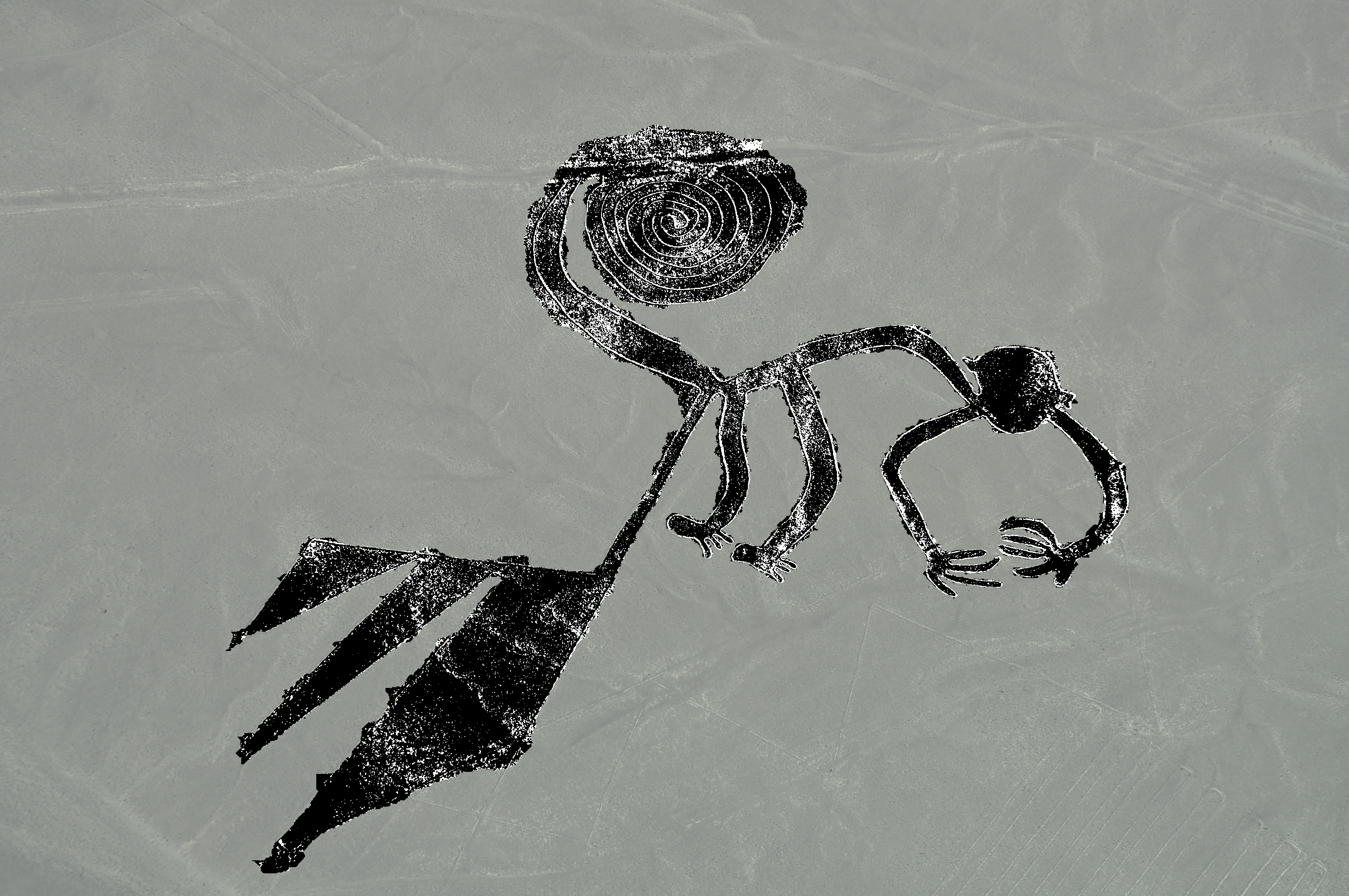Flight over the Nasca and Palpa Lines
Flying day: We were picked up by a van and driven to the airport Maria Reiche. After some waiting, we boarded a Cessna 205, and flew over the Nasca Lines. The plane circled for while over each geoglyph which exerts a bit of force onto the body — and the stomach. Gisela became paler and paler with every geoglyph. Felix by the contrary was already pale from the diarrhoea when he boarded the plane but felt all right. I had booked the long tour with around 20 geoglyphs — which I am sure Gisela did not appreciate in this particular moment 🙂
Unfortunately, the flight started at around noon, when the sun reached its zenith. The trenches of the Nasca lines almost left no shadows. The figures are hence not always clearly visible on the fotos that I took. Here our itinerary:
- Nasca Lines: The Whale
- Nasca Lines: The Triangles
- Nasca Lines: The Astronaut
- Nasca Lines: The Dog
- Nasca Lines: The Monkey
- Nasca Lines: The Humming Bird
- Nasca Lines: The Spider
- Nasca Lines: The Condor
- Nasca Lines: The Parrot
- Nasca Lines: The Hands
- Nasca Lines: The Heron
- Nasca Lines: The Tree
- Nasca Lines: A Spiral
- Palpa Lines: The Sun Star
- Palpa Lines: The Traveller
- Palpa Lines: Kosok’s Humming Bird
- Palpa Lines: Parcas Family
- Palpa Lines: Man, Fertility, Women
- Palpa Lines: Circle from Rectangles
- Palpa Lines: The Solar Clock
- Palpa Lines: Tomb
- Palpa Lines: Dinosaur (or The Chicken of the Condor)
Once back everybody did as he pleased — Gisela and Felix went shopping, and I hopped into a car and went to see Maria Reiche’s hut that is now a small museum.
The Nasca Lines
The Nasca lines are formed by trenches that were scratch into the surface and are about 10 to 15 centimetres deep. In the process, the pebbles lying on top of the desert floor were removed, and the clay beneath was exposed. The lighter colour of the clay contrasts with the reddish-brown pebbles making the lines visible. The Nasca left several hundreds carvings (the desert is virtually littered with them), and choose mostly animals and human figures as motives. Most of the lines date from 200 BC to 600 AC while the oldest figures were carved from 800 BC – 200 BC during the Parcas culture that preceded the Nasca culture. The biggest figures measure up to 270 meters.
The start of construction of the Nasca lines coincides with a climate change that left the Parcas and Nascas with reduced water supplies and occasional catastrophic floods and mud slides. It is hence assumed that the lines were used for ritual purposes as procession streets, such as asking the deities for water.
Pedro Cieza de Leon is the first to mention the lines in 1553 mistaking them as trail markers. With the beginning of the aviation age, passengers and crews of the first commercial flights crossing the Nasca desert spotted them in 1924. This did however not spark a wider interest. It was only in 1927 that the archaeologist Toribio Mejia Xesspe rediscovered them while hiking through the foothills. The first serious study of the lines was conducted in 1940 – 1941 by Paul Kosok, an American historian teaching at the Long Island University. He was to first to realize that the lines actually represent animal figures when flying over them. Trailing him was Maria Reich, an mathematician and archaeologist, who devoted the rest of here life in researching, preserving, and advocating the Nasca Lines as well as her particular interpretation of them as star calendar. The research and preservation effort goes on until today.
The desert is among the driest of the Earth, and the temperature remains around 25 °C all year around. This and the lack of wind preserves the lines and keeps them uncovered and visible.
While it is undisputed that the lines where carved with wooden tools into the ground, there are several hypothesises on how this collaborative effort was organized. Some scientist suggest that the Nasca had hot air balloons that allowed them to direct the construction from above. Others think that architects with basic mathematical skills oversaw the construction.
Interesting is the theory of Henri Stierlin, a Swiss historian. He theorizes that the lines where used as giant looms to produce the long strings and wide textiles found in the area. Not surprisingly, this theory is not widely accepted.

Take-off sequence at Maria Reiche Airport. The movie is 300 MB — please keep this in mind before clicking it.

